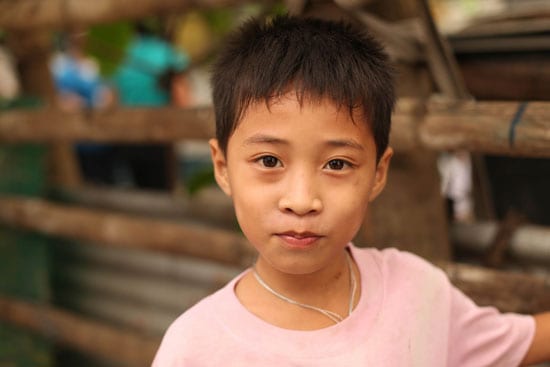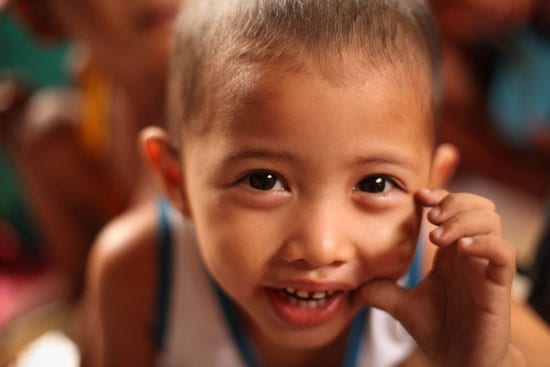Typhoon Haiyan hit the Philippines this past week. Food and clean water are needed. Thousands lost their homes. In response, nonprofit organizations are asking for donations to help with the recovery efforts.

Choosing the best charity to donate to is an important decision. Not all donations are equal. Here are three questions to help you decide which charity is best for you.
Was the nonprofit working there before the disaster?
When I was in the Philippines a few weeks ago, I rode in a motorcycle sidecar to a nutrition and feeding program run by locals in the community. On the way to the program, we passed the office of a major nonprofit. The lights were off and the building was empty.
My traveling partner, a nutritionist from the feeding program and a local resident of the island told me, “This nonprofit only brings in staff when there’s a big disaster. They’re not really active in the community.”
Working in a community before a disaster happens is very important. Relationships are established. Communication is open. The nonprofit’s reputation is solid and things are getting done. After a disaster strikes, each hour is precious. Established nonprofits – with supplies and staff – can take informed action immediately.
TAKEAWAY: Donating to a nonprofit that is already established means communication, aid and momentum can make an impact more quickly.
Will the nonprofit stick around after the disaster?
When a disaster hits, the immediate needs of relief – food, water, shelter, and medical care – get attention (as they should). Without this effort, people die. But development can’t stop there.
Communities need long-term rehabilitation and development to succeed. Real change in a country doesn’t happen quickly. Nonprofits that plan to meet both immediate need and long-term development will understand how the two parts work together. Patience and endurance to stick around after the media buzz has worn off are admirable traits in a nonprofit.
TAKEAWAY: Donating to a nonprofit that plans to stay with the people after the disaster means that important long-term development will happen as well.

How will my donation be used?
A nonprofit that has already been active in the community before a disaster, and is committed to staying after the disaster is over, will use your money differently.
If the nonprofit with the empty office decided it wanted to help after a storm, it would have to transport staff, ship supplies, and reestablish communication in the community. Without active programs already there, extra dollars are often needed to get things going.
Spending money just on immediate need without a plan for the long term will result in incomplete help. This most recent disaster in the Philippines destroyed crops. Rice fields and coconut trees will not be able to produce again for a while. After the immediate need has been met with aid, donations should be used to rebuild farms and reconstruct roads for commerce to regain momentum.
TAKEAWAY: Whether you are going to donate $10 or $10,000, it’s important that each dollar is used in a balanced plan that considers both immediate need and long-term development.
If you want your donation to make a lasting impact, consider organizations that are already established, will continue to work long term, and use their money most effectively through a balanced plan.
- Donate now to help children and families affected by Super Typhoon Haiyan
ABOUT THE AUTHOR: Drew Gneiser tells stories and manages the social media at Feed My Starving Children, an international nonprofit in the business of helping volunteers turn hunger into hope with their own two hands.
All photos are courtesy of Feed My Starving Children.







4 Comments |Add a comment
Chuck, not necessarily, but UMCOR sounds like a great organization too!
This is great but how do you know if an organization is there before or plans to stay after? Like Red Cross, etc?
Hey Tiffany – Sorry for the delayed response. To find out if an organization is there before or plans to stay, I’d recommend first checking out their website. Read up on how they work – if they have a long-term approach to development as well, it should be outlined in their material. Other good places to look are third-party watchdog sites that list financial info, reviews, etc. Hope this helps!
Some organizations focus solely on disaster relief. This means that they will typically travel from disaster to disaster providing relief and then moving on. If an organization has more of a focus on some sort of long term local development as well as disaster relief, they probably will have been there and will be staying after the disaster.